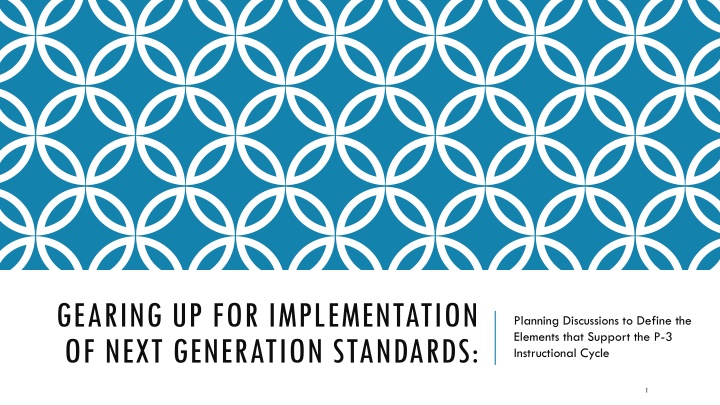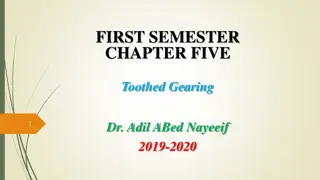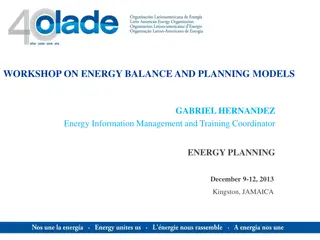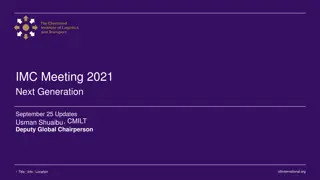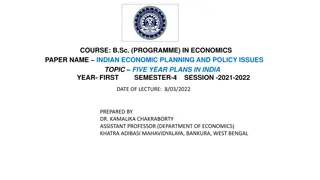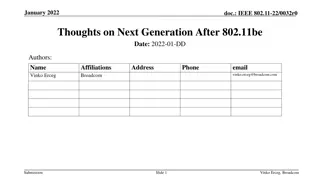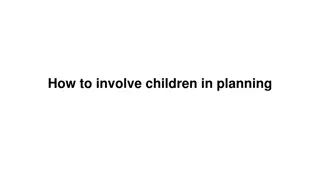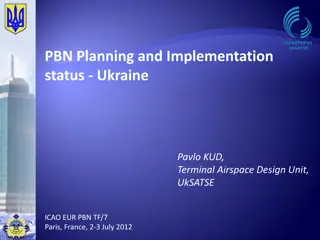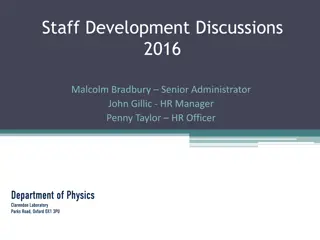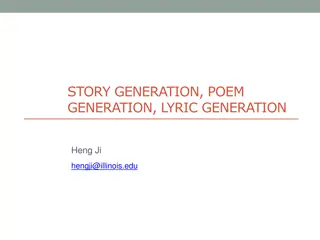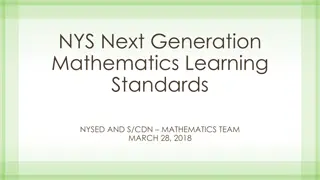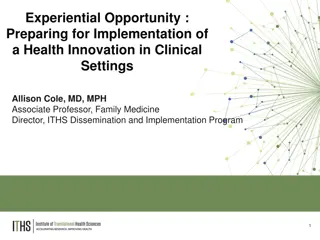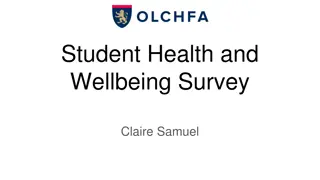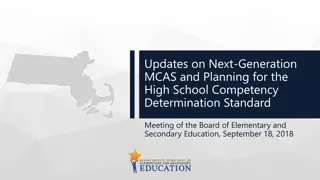Gearing Up for Next Generation Standards Implementation: Planning Discussions
Define elements supporting the P-3 instructional cycle in the context of Next Generation Early Learning Standards. Discuss purpose, objectives, meeting overview, Developmentally Appropriate Practice (DAP), early learning and development insights, red flags to avoid, and more.
Download Presentation

Please find below an Image/Link to download the presentation.
The content on the website is provided AS IS for your information and personal use only. It may not be sold, licensed, or shared on other websites without obtaining consent from the author.If you encounter any issues during the download, it is possible that the publisher has removed the file from their server.
You are allowed to download the files provided on this website for personal or commercial use, subject to the condition that they are used lawfully. All files are the property of their respective owners.
The content on the website is provided AS IS for your information and personal use only. It may not be sold, licensed, or shared on other websites without obtaining consent from the author.
E N D
Presentation Transcript
GEARING UP FOR IMPLEMENTATION OF NEXT GENERATION STANDARDS: Planning Discussions to Define the Elements that Support the P-3 Instructional Cycle 1
PURPOSE AND OBJECTIVES Purpose: To structure conversations about the elements that support the P-3 instructional cycle within the context of New York State s Next Generation Early Learning Standards. Objectives: At the end of the meeting, participants will be able to: Articulate key messages about the Next Generation standards for young learners Define and distinguish between learning standards, curriculum, instruction, and assessment Describe implementation challenges List strategies for managing challenges 3
II. MEETING OVERVIEW Revision Rationale Review Next Gen Standards why is important Local programs Modify, as necessary 4
DEVELOPMENTALLY APPROPRIATE PRACTICE (DAP) DAP is an approach to teaching that is: grounded in the research on how young children develop and learn, and what is known about effective early education. It involves teachers meeting children where they are (by stage of development), both as individuals and as part of a group and culture; and helping each child meet challenging and achievable learning goals. -NAEYC DAP Position Statement 2009 5
WHAT WE KNOW ABOUT EARLY LEARNING AND DEVELOPMENT All areas of development and learning are important Learning and development follow sequences and proceed at varying rates Learning and development result from an interaction of maturation and experience Learning and development occur in and are influenced by multiple social and cultural contexts 6
WHAT WE KNOW ABOUT EARLY LEARNING AND DEVELOPMENT (CONT.) Early experiences have profound effects on development and learning Children learn and develop best when they have secure relationships Children learn in a variety of ways; play is key -NAEYC DAP Position Statement 2009 7
WHAT TO LOOK OUT FOR (SOME) RED FLAGS AVOID: !Excessive teacher-led whole group instruction !Fragmented teaching of discrete skills !Rigid, tightly paced schedules !Few opportunities for children to problem solve, explore and discover with teachers and with peers !Few opportunities for rich play, physical activity, SEL, arts !High-pressure culture (which is different from high expectations) 8
III. REVIEW KEY MESSAGES AND CONCEPTS: ACTIVITY Take out your marked-up copy of the Introduction to the NYS Next Generation Early Learning Standards Step 1 Step 2 In pairs, take turns discussing what resonated most with you and why Step 3 Report out three key messages to the full group 9
IV. STANDARDS FOR LEARNING AND THE INSTRUCTIONAL CYCLE: STUDENTS AT THE CENTER Teams put students in the center of the design. This signifies many things, including: All students Whole students Diverse students The double arrows between student learning and the three elements remind us that students are active participants and at the core of the instructional process. Understanding who students are, what they know and are able to do are essential to providing instruction that is individualized, differentiated, culturally and linguistically relevant, and context-based. 10
STANDARDS AND THE INSTRUCTIONAL CYCLE A structure for discussing the relationships and distinctions among learning standards, curriculum, instruction, and assessment within the context of prekindergarten 3rd grade Cyclical nature Process of reflect, inform, adjust Individualized, differentiated, culturally and linguistically relevant, context-based Aligned and coherent 11
DEFINING STANDARDS, CURRICULUM, INSTRUCTION, ASSESSMENT: ACTIVITY Step 1 Carefully read the narrative descriptions for the assigned element Step 2 Design a mini-presentation to present to the full group Step 3 Highlight P-3 messages/content 12
STANDARDS: HIGHLIGHTS Student learning goals defined by subjects, grades, and in some cases, by grade bands; the Where are we going or destination Articulate a learning progression along a continuum Provide a framework for local planning and development PK standards address ALL domains. Approaches to Learning, Physical Development and Health, Social and Emotional Development, Communication Language and Literacy, Cognition and Knowledge of the World NOT designed as a lockstep progression of lessons or curricula since children s pace of development is not uniform 13
CURRICULUM: HIGHLIGHTS Content, concepts, and skills that provide a roadmap for what is taught; the what Flexible design to meet unique needs of students Cultural and linguistic contexts Follow developmental sequence within content areas Emphasize robust, interactive, and integrated learning experiences Address ALL domains of learning and development since they are intrinsically linked and mutually supportive 14
INSTRUCTION: HIGHLIGHTS Approaches and strategies used to teach content so students can learn; the how Act of teaching to meet students where they are; outlined by curricula and guided by what is understood about individual students Utilizes learning environments, interacting with students/connection, creating a classroom culture, fostering student engagement, embedding social/emotional supports Hands-on practice and purposeful *PLAY* are vital instructional strategies for students to understand abstract concepts, hone skills, and for teachers to observe student learning and social interaction Grounded in child development theory and DAP Ongoing, cyclical and intrinsically linked to formal and informal assessment 15
ASSESSMENT: HIGHLIGHTS Multiple, varied processes used to understand more about student learning and development and to guide and inform teaching, the where are we now and where should we go next Screening and diagnostic: is there a need and what is that need Formative: ongoing methods to inform instruction and individualize goals and learning experiences Observation, work samples, interaction to analyze student understanding and progression Used to modify instruction, refine environment, provide feedback, connect with families Summative: report about acquisition of knowledge and skills at end of prescribed term often to evaluate effectiveness (not typically used P-3) 16
DISCUSSION SCENARIOS: ACTIVITY Read through the 5 scenarios individually Step 1 Discuss the scenarios as a table group using guiding questions (Which element does this relate to most? Is this based on a state or local decision/assumption? How would you address the challenge?) Step 2 Report out on scenarios that the group found most interesting Step 3 17
LOCAL REFLECTION What are our strengths? What areas do we need to review? How can we address our needs? 18
WRAP UP AND THANK YOU! THANK YOU! 19
